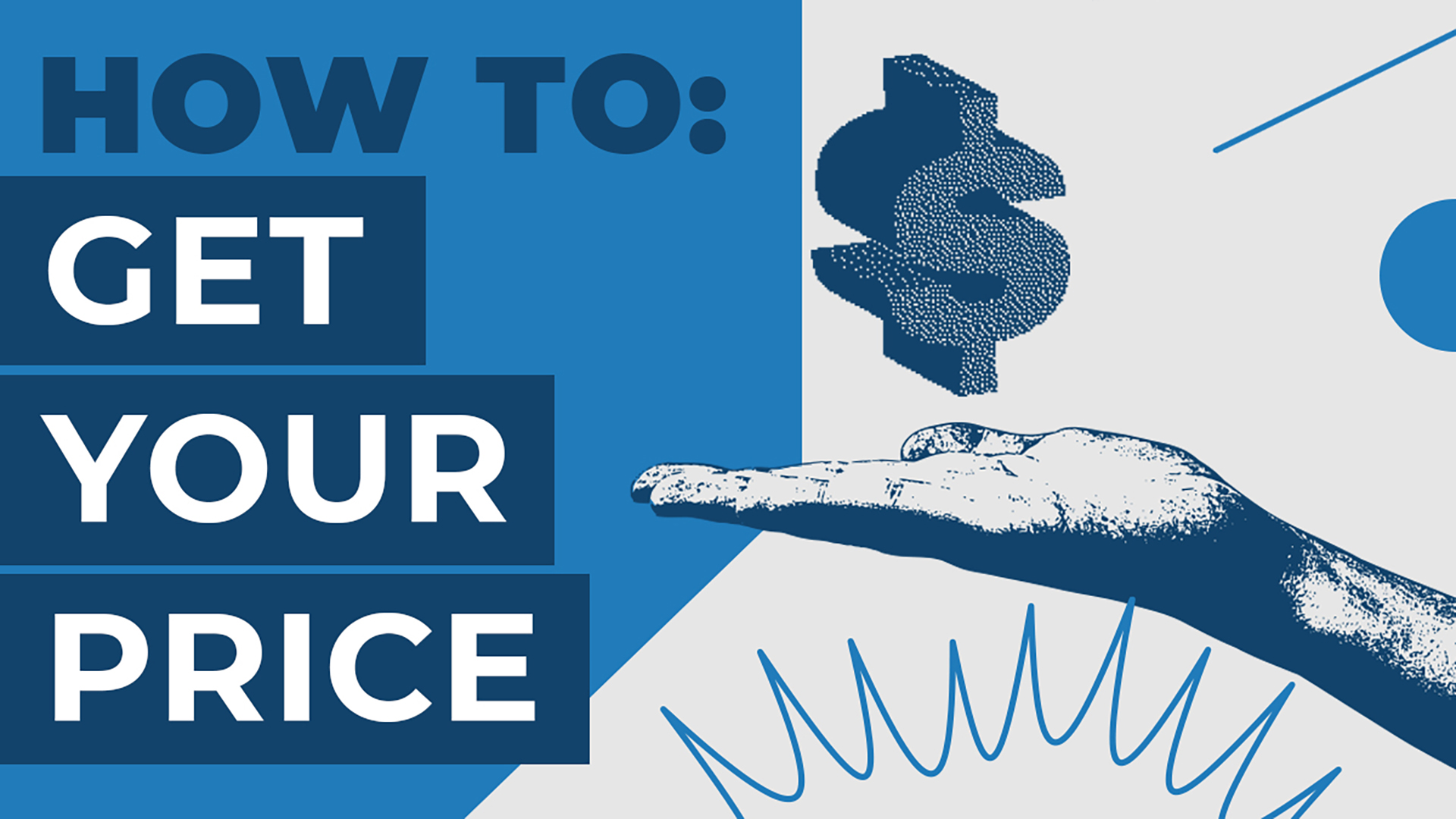How Do I Help My Team Get the Pricing They Want?
Helping salespeople arrive at the price they want is a multi-step, dynamic process with all prospects. It’s not just something a sales rep deals with at the end of the sale. They should be thinking about how to get their price from the moment they first speak with the prospect.
There are four steps to get buyers to agree to your company’s pricing. They may not happen in the same order with every sale, but if they don’t all occur, your sales reps will likely have to deal with some degree of pushback.
Getting your price is all about having a belief system that your product or service is worth what it’s being sold for, calling on the right segment of the market, qualifying those buyers within the market, and favorably positioning yourself by providing value.
Here are four things to teach all your reps, so they can sell at the price they want.
1. Analyze the Belief System
Salespeople must believe their product or service is worth the asking price, otherwise, they won’t protect it. As soon as a prospect applies a little bit of pressure or aggravation over the price, they’ll be prone to reduce it, giving away precious margin.
We can likely agree that a bottle of water should only cost a couple of dollars, maybe a little more depending on the brand. However, if that same bottle of water is offered to someone stranded in a desert suffering from dehydration, it could be worth their life!
What changes in that example is the value. More specifically, the value the person buying the product places on it.
Similarly, your team’s beliefs in how much value your offering has changes from prospect to prospect. It’s not enough for a sales rep to say, “I believe in my product,” they must constantly ask themselves: “do I believe my solution is valuable to this particular prospect?”
Sometimes a seller will walk in the door, believing their offering is valuable, and other times they’ll have to learn more about the prospect before they get there. Either way is fine, as long as the salesperson is cognizant of their own attitude towards their product or service’s value—for each individual prospect.
2. Sell to a Market That Will Tolerate Your Price
Just as sales reps have to conclude your solution’s value is worth the price, their prospects have to do the same thing.
Not everybody is in the market for what you sell, and even if they are, not everybody is willing to pay the price you need to sell at to make enough margin. If we need to sell our anecdotal bottle of water for $5, we’ll need to find a market or segment that believes the price is reasonable.
Buyer sentiments change as markets change. Something can happen in the marketplace that causes buyers to see more or less value in your offering.
Make sure your team doesn’t assume they know what a buyer perceives as valuable. Salespeople tend to erroneously believe buyers are most concerned with price. However, we’ve found through research that most buyers rank price as the third or fourth most important thing. Many care about quality, service, and deliverability more than price.
3. Qualify Like the Sale Depends on It
Gone are the days of throwing mud up against the wall to see what sticks.
Sales professionals have to understand that qualified prospects have certain characteristics. They will find out how much of an issue price is going to be during the questioning phase of the sales process.
There are some fundamental questions they should always be asking, like:
- What budget range do you have in mind?
- What kind of a time frame are you working within?
- What options have you seen that are particularly appealing to you?
- Do you already have a particular solution in mind, or are you looking for additional insight?
- Who else, other than you, of course, will be involved in the buying decision?
The answers to these questions will tell them if they’re dealing with the actual decision-maker, as well as what the prospect considers valuable.
4. Position Yourself Carefully
Positioning is simply an analysis of where a seller stands in the hierarchy of vendors who can provide a similar solution to the prospect. Prospects have options, and chances are good they aren’t just talking to your sales rep.
Buyers analyze the value your company provides to rank you against the competition.
They’re looking at two things: what your company will do for them, and what your salesperson will do for them.
Your sales rep can’t control whether your company provides on-time delivery, or if your customer service department knows every client by name (if you can help them in these areas that’s great, although that’s not always possible.) A salesperson should focus on what they can control, which is the personal value they provide to the prospect as their salesperson.
For example, do you teach your team to share industry insight with prospects? Do you ask them to think strategically about challenges their prospects and customers are facing and ways your company can provide value by solving those challenges with your offering? Do you have your team learn through role-playing conversations that practice providing value through thought leadership by means of their in-person advice? The way sales reps position themselves will impact the amount of price resistance they face while selling.
Additionally, how do your sales reps position themselves when they’re asked for a discount?
Did you know that 80% of concessions are made during the last 20% of the sales cycle? Trained buyers know this. They know that once a salesperson has invested enough energy, they’ll do anything to make the sale.
The buyer may use tactics like telling you a competitor agreed to a lower price point, but they want to see if you’ll match it first. Or they’ll keep delaying their decision and mention the price is a bit high.
If possible, teach your team to avoid priceshoppers. If this isn’t possible (and for all other prospects), many of the above issues can be averted by effective pre-call planning, investigating, and questioning.
Teach your reps how to do their homework, so they’re able to pivot price conversations into value conversations.
Price Is Always a Reflection of Value
Hopefully, you noticed that one particular word was mentioned in every one of the above steps: value.
You get your price by providing more value than prospects think the product is worth.
Sales reps can’t create value if they present the price too soon. Teach them to present their price only after they’ve created sufficient value, and they’ll be able to sell at whatever price is merited by the value they deliver.
We know that no two sales reps are exactly the same, and each member of your team could benefit from sales training in different areas. BrooksUP is an interactive digital library that gives sales managers a way to train each member of their team through customized learning paths. You and your team will gain access to sales playbooks, podcasts, videos, audiobooks, and other powerful tools that combine the power of self-paced learning with social group training.
Learn more about BrooksUP or contact a member of our team for additional information.
Check out our Sales How To Hub for additional insight on this topic with exclusive access to our Sales Leader Coaching Videos and tools!




